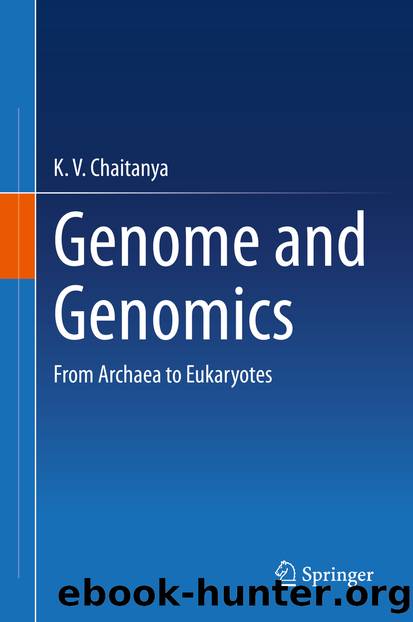Genome and Genomics by K. V. Chaitanya

Author:K. V. Chaitanya
Language: eng
Format: epub
ISBN: 9789811507021
Publisher: Springer Singapore
5.7.3 Gene Prediction
Among the identified 25,498 genes of the Arabidopsis genome, functions of 17,593 (69%) genes were predicted and classified based on their sequence similarity with the proteins of known function and only 9% of them have been experimentally characterized. Similar proportions of the Arabidopsis mitochondrial gene products were targeted to the secretory pathway and 14% of the gene products are targeted to the chloroplast. Comparing the genes of unicellular and multicellular eukaryotes with that of Arabidopsis indicates that the genes involved in cellular communication and signal transduction in Arabidopsis have more counterparts in multicellular eukaryotes than prokaryotes. Significant redundancy is also evident in the Arabidopsis genome in the form of segmental duplications , tandem arrays, and many highly conserved genes are also found to be scattered over the genome. Segmental duplication is responsible for 6303 gene duplications.
A total of 11,601 protein types were identified in the Arabidopsis genome, among which 35% are unique and the proportion of proteins belonging to families with more than 5 members is 37.4%. The absolute number of Arabidopsis gene families and their types is similar to other multicellular eukaryotes, indicating that a proteome of 11,000–15,000 types is sufficient for a wide diversity. Most of the domain functions identified in Arabidopsis are also conserved in, S. cerevisiae, Drosophila and C. elegans genomes, indicating ubiquitous pathways in eukaryotes. Arabidopsis gene set has also shown some significant similarity with that of humans. Using BLASTP, it was identified that out of 289 human disease genes, 139 (48%) had similarity with Arabidopsis. Among them, 17 human disease genes have more similarities with Arabidopsis genes than yeast, Drosophila or C. elegans genes (Table 5.2). Even though numerous protein families with similar functions are shared between eukaryotes, plants contain only 150 unique protein families, including transcription factors, structural proteins, enzymes and proteins of unknown function. Members of the gene families common to all eukaryotes have undergone substantial increase or decrease in their size in the Arabidopsis genome. Finally, the transfer of a relatively small number of cyanobacteria-related genes from a putative endosymbiotic ancestor of the plastid has added to the diversity of protein structures that are found exclusively in plants.Table 5.2Arabidopsis genes with high similarity to human genes
Download
This site does not store any files on its server. We only index and link to content provided by other sites. Please contact the content providers to delete copyright contents if any and email us, we'll remove relevant links or contents immediately.
| Cell Biology | Developmental Biology |
| Entomology | Marine Biology |
| Microbiology | Molecular Biology |
| Biostatistics |
Sapiens: A Brief History of Humankind by Yuval Noah Harari(14209)
The Tidewater Tales by John Barth(12594)
Mastermind: How to Think Like Sherlock Holmes by Maria Konnikova(7195)
Do No Harm Stories of Life, Death and Brain Surgery by Henry Marsh(6875)
The Thirst by Nesbo Jo(6806)
Why We Sleep: Unlocking the Power of Sleep and Dreams by Matthew Walker(6595)
Life 3.0: Being Human in the Age of Artificial Intelligence by Tegmark Max(5446)
Sapiens by Yuval Noah Harari(5280)
The Longevity Diet by Valter Longo(5006)
The Body: A Guide for Occupants by Bill Bryson(4950)
The Rules Do Not Apply by Ariel Levy(4822)
The Immortal Life of Henrietta Lacks by Rebecca Skloot(4500)
Animal Frequency by Melissa Alvarez(4382)
Why We Sleep by Matthew Walker(4340)
The Hacking of the American Mind by Robert H. Lustig(4302)
Yoga Anatomy by Kaminoff Leslie(4288)
All Creatures Great and Small by James Herriot(4211)
Double Down (Diary of a Wimpy Kid Book 11) by Jeff Kinney(4175)
Barron's AP Biology by Goldberg M.S. Deborah T(4080)
